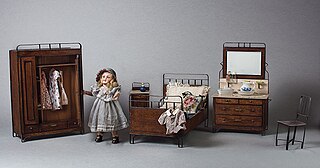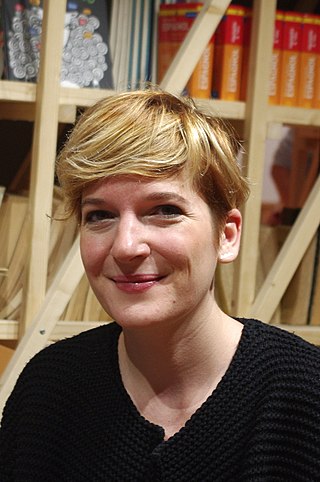Bandes dessinées, abbreviated BDs and also referred to as Franco-Belgian comics, are comics that are usually originally in French and created for readership in France and Belgium. These countries have a long tradition in comics, separate from that of English-language comics. Belgium is a mostly bilingual country, and comics originally in Dutch are culturally a part of the world of bandes dessinées, even if the translation from French to Dutch far outweighs the other direction.
The Prize for a Series is one of the prizes awarded by the Angoulême International Comics Festival. This prize was first awarded in 2004, then after two more years was cancelled. It was reinstated in 2010 and has been awarded ever since.
The Prix de la critique is a prize awarded by the Association des Critiques et des journalistes de Bande Dessinée to the best comic album released for a year in France. Previously, from 1984 to 2003, it was called Prix Bloody Mary and awarded at the Angoulême International Comics Festival. Concerned at first with albums of the Franco-Belgian comics school it was eventually interested in works coming from the comic book tradition of more distant lands.

Enrico Marini is an Italian comics artist.

Bleuette is a doll that was produced from 1905 to 1960 in France and was available to readers of the girls' magazine La Semaine de Suzette, or the English version, "Suzette's Week".

Lambil is a Belgian comic-book artist, best known for the series Les Tuniques Bleues, which has been published in English as "The Blue Tunics" and "The Bluecoats".
Jacques Dumas, better known as Marijac, was a French comics writer, artist, and editor.
Gautier-Languereau is a French publishing house, founded by Maurice Languereau and Henri Gautier, and currently owned by Hachette Livre, and used as an imprint for children's literature.
La Semaine de Suzette was a French magazine aimed at girls, which appeared from 1905 until 1960. It contained early comics like Bécassine.
Louis Paradis is a Canadian comics artist, writer and illustrator from Montmagny, Quebec, Canada.

Florence Cestac is a French cartoonist and former publisher. She is the first woman to have won the prestigious Grand Prix de la ville d'Angoulême, in 2000, and was the only one until Rumiko Takahashi in 2019.

Émile-Joseph Porphyre Pinchon was a French painter, illustrator, designer and comic book creator, best known for his series Bécassine.
Mira Falardeau is a French Canadian historian, professor, and author of comic strips. Falardeau has devoted works to Québec animated films, Québec comic strips and caricatures in Québec, focusing on visual humour in all its forms. She taught as a professor of cinema and communication at Laval University and the University of Ottawa. Falardeau has also curated exhibitions in the visual arts and operated a small publishing house.

Édouard François Zier was a French illustrator and painter.

Chantal Montellier, born on August 1, 1947, in Bouthéon near Saint-Étienne in the Loire Department, is a French comics creator and artist, editorial cartoonist, novelist, and painter. As the first female editorial cartoonist in France, she is noted for pioneering women's involvement in comic books.
Jacqueline Rivière was a pseudonym of a French writer, newspaper editor-in-chief and creator of the successful comic strip Bécassine.

Mathilde Alanic was a French writer of sentimental novels and short stories. Her work appeared in Les Annales politiques et littéraires, L'Eventail, Le Magasin pittoresque, Musée des familles, Le National illustré, La Petite Illustration, Le Petit Journal, Le Petit Parisien, Revue de l'Anjou, and other journals. Alanic was a recipient of the Montyon prize, Jules-Favre prize, Sobrier-Arnould prize, and was promoted Chevalier, Legion of Honour. She died in 1948.

Aurélie Neyret is a French illustrator and cartoonist of bande dessinée.

Claire Bouilhac is a French bande dessinée illustrator, scriptwriter, and colorist, working in particular for Spirou and Fluide Glacial. She mainly draws the series Maude Mutante, Francis Blaireau Farceur, and Melody Bondage. She is a 2022 laureate of the Prix Schlingo.

Marie Jaffredo is a French BD comics scriptwriter and cartoonist of Breton and Norman origin.











